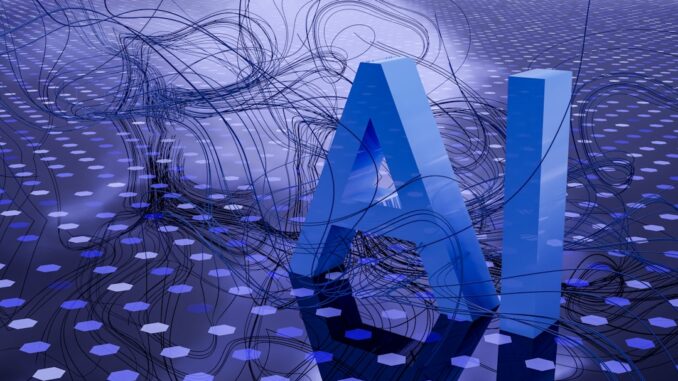
Summary
This article explores how AI is transforming data center backup strategies, from automating tasks to predicting failures and optimizing storage. The integration of AI and machine learning is enhancing data resilience and ensuring business continuity in the face of growing cyber threats and data demands. AI is enabling smarter, more efficient, and proactive backup solutions, marking a significant shift in the data center landscape.
Protect your data with the self-healing storage solution that technical experts trust.
Main Story
The world of data centers? It’s changing, and it’s changing fast. Driven by artificial intelligence, or AI as we all call it, these places aren’t just rows of servers anymore. They’re becoming super dynamic powerhouses, and that means we have to totally rethink our backup plans to ensure nothing is lost. I mean, data resilience is vital, right? Business continuity depends on it. AI isn’t just a buzzword here; it’s playing a HUGE role, showing us smarter ways to do backup and recovery.
Consider this, one of the biggest things AI brings to the table is automated backups. Back in the old days, you know, someone actually had to manually schedule backups. Think about that! It was such a time-suck, not to mention prone to all sorts of human errors. But now? AI systems can take the wheel, scheduling backups, validating the data, and even spotting those weird anomalies. Which, in turn, frees up IT staff to work on, well, more strategic projects. Because, let’s be honest, there’s more important things to do than micromanaging backups. And, through learning from past actions, AI can make these backup schedules even better, prioritizing what’s critical and being more efficient with resources.
Then there’s storage, which can feel like a black hole sometimes. Data keeps expanding, that’s no secret, and storage is always at a premium. But AI, it’s a data detective of sorts. It can analyze usage patterns, point out redundancies and freeing up valuable space. And what about forecasting? AI can even predict future storage needs. You know, it can help you scale your infrastructure to head off those potential problems that can cost a lot of money.
And here’s where it really gets good, the predictive capabilities are pretty incredible. AI can comb through a ton of data, find potential risks, and even predict hardware failures and cyberattacks. That’s pretty powerful, isn’t it? This gives data centers the chance to take preventative measures, reducing downtime and the loss of data. If a disaster does strike, AI can actually speed up recovery too, focusing on the most critical stuff first. For instance, I remember a time, working at a previous company, where our AI system predicted a hard drive failure almost 24 hours before it happened, giving our team a chance to move that data before it was lost.
Also think about how all of this impacts the actual data center’s design. AI systems need a lot more power and bandwidth than the older hardware we’re used to, meaning we’re moving towards high-density computing. That also requires more advanced cooling solutions, because let’s face it, nobody wants a server room to be a sauna. So now data centers are being built with more flexibility; modular and scalable designs are becoming more common. And AI? It’s even helping manage power consumption, which saves money and is good for the environment.
In short, the move to AI-powered backups is massive. By automating tasks, optimizing storage, and even forecasting failures, AI improves data resilience and ensures that business can function no matter what challenges appear, including cyber threats and increased data demands. And, honestly, as AI keeps evolving, I expect we’ll see backup solutions get even more intelligent and refined, continuing to transform the data center world.
But, of course, more AI comes with some challenges, especially when we talk about power. High-performance computing requires reliable, adaptable power systems and the power grids have to keep up. Then you have edge computing, with data being processed closer to the source, further complicating power distribution. All of this needs distributed solutions and efficient energy management. To tackle this, I’m seeing data centers turn to things like Battery Energy Storage Systems (BESS). BESS can help stabilize the grid, act as a backup power source, and allow for better integration of renewable energy. It is, in a lot of ways, about future-proofing our data infrastructure.


The predictive capabilities of AI in identifying potential risks, including hardware failures and cyber threats, represent a significant advancement in data center management, allowing for proactive intervention and reduced downtime.
Absolutely! The proactive intervention enabled by AI is a game-changer, as you rightly pointed out. It’s amazing how predicting hardware failures and cyber threats can reduce downtime and improve the overall efficiency of data centers. This is only the beginning of AI’s impact!
Editor: StorageTech.News
Thank you to our Sponsor Esdebe – https://esdebe.com
So, AI’s not just backing up data, it’s predicting hard drive meltdowns? I bet the servers are now all sweating nervously waiting for their performance reviews.
That’s a fun way to look at it! The servers might be sweating, but it’s more about proactive maintenance than performance reviews. AI’s ability to predict failures lets us replace parts *before* they cause downtime, improving overall system reliability.
Editor: StorageTech.News
Thank you to our Sponsor Esdebe – https://esdebe.com
So, AI’s not just predicting hard drive meltdowns, but also acting as a power grid soothsayer? I guess that means the servers can stop sweating about performance reviews and start worrying about blackouts.
That’s a great point about AI being a power grid ‘soothsayer’! It’s fascinating how it’s enabling smarter energy management, not just for data centers themselves but also in the larger context of power infrastructure. The interconnectedness is becoming more apparent.
Editor: StorageTech.News
Thank you to our Sponsor Esdebe – https://esdebe.com